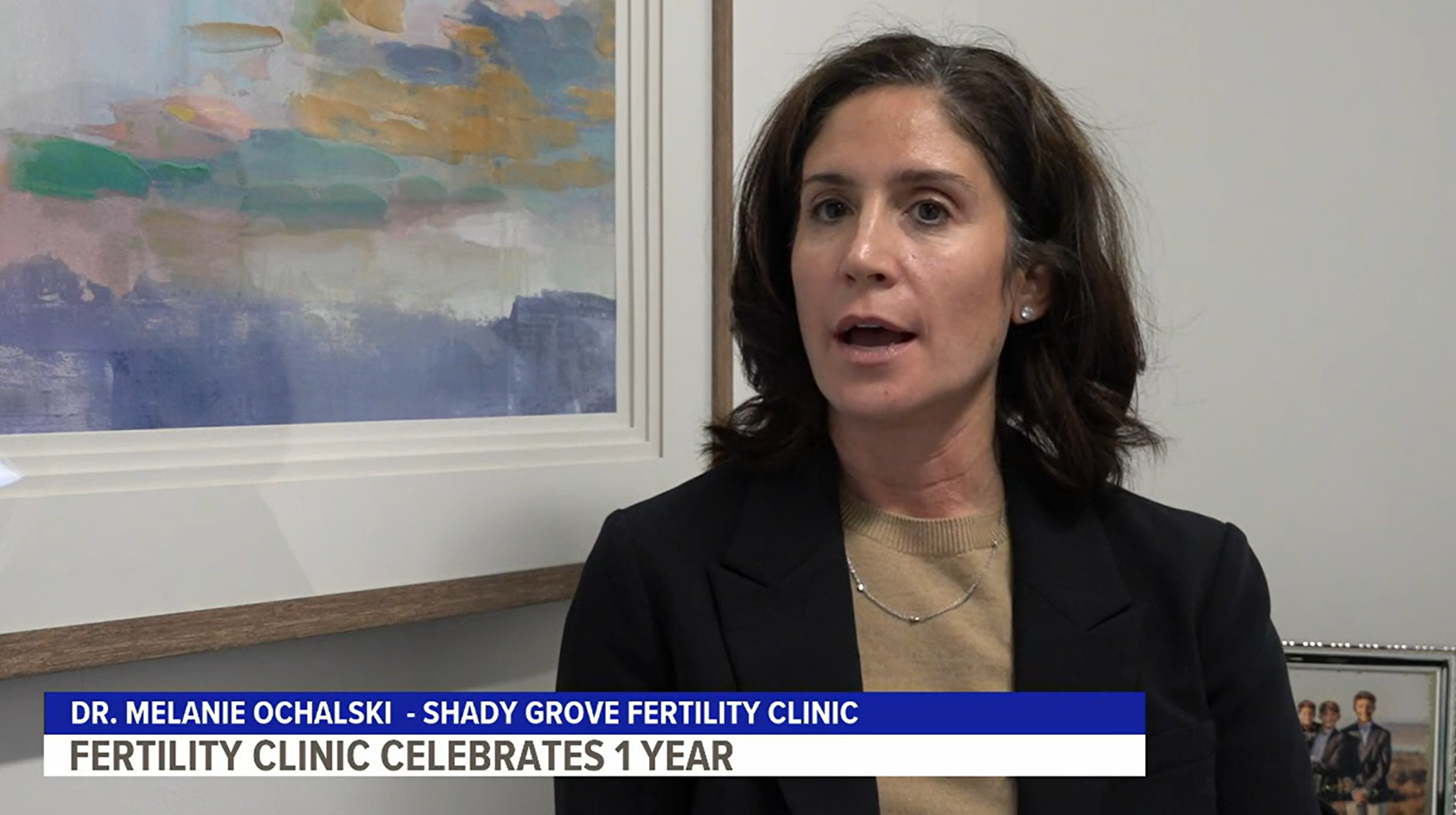Part two of our IVF overview series takes you inside the embryology laboratory and describes step-by-step how an egg becomes an embryo, how the embryos are cared for, how you and your clinical team are updated daily, and how the transfer date is determined.
In Vitro Fertilization (IVF) treatment requires a substantial level of dedication from patients during the first half of the treatment cycle. During the ovarian stimulation phase, patients do daily injections, morning monitoring appointments and frequent follow-ups with their clinical team. Once the patient’s eggs are retrieved, the focus of the cycle shifts into the embryology laboratory where the eggs are fertilized and developed until it’s time for the embryos to be transferred. Because this part of the cycle happens behind the laboratory doors, most patients aren’t familiar with the level of organization, detail and skill that goes into developing each embryo and preparing it for transfer.
Keeping Embryos Safe Inside the Laboratory
For the convenience of patients living in both the Baltimore and Washington regions, Shady Grove Fertility has two embryology laboratories, one in Rockville, MD and another in Towson, MD. These offices are where all IVF patients have their egg retrievals, fertilization and embryo development, and embryo transfer procedures done.
These embryology laboratories are filled with state-of-the-art incubators, microscopes, and highly skilled technicians to ensure patient’s sensitive eggs have the best chance of growing into healthy embryos.
The equipment within the laboratories is what really sets the Shady Grove Fertility laboratory apart from any other. At our largest laboratory in Rockville, the embryology laboratory is ISO-certified Level 1000 clean rooms. This means that the space within the laboratory is so clean, it has less than 1,000 particles per cubic meter. To put this in perspective, the environment outside has over 35,000,000 particles per cubic meter. The filtered air within the entire laboratory is replaced 30 times per hour. Air re-entering the laboratory is filtered through both HEPA filtration for particulates and carbon filters for volatile organic compounds (VOC’s). This prevents nearly all contaminates from interrupting the growth of embryos.
Embryos are developed and cultured in one of 43 incubators, which act as artificial wombs. The environment within each incubator is carefully controlled; the temperature is set to a constant 98.6 degrees Fahrenheit, and the incubator interior is kept dark to further emulate the womb environment.
Several of the procedures within the embryology department take place under one of the laboratory’s five inverted microscopes. These microscopes allow light from above the Petri dish to illuminate down through the sample into the lenses located at the bottom of the microscope. Each microscope magnifies up to 400 times and provides high resolution views of the sperm, eggs, and embryos, allowing embryologist to make precise movements when doing procedures.
Along with the inverted microscopes, the laboratory also has 14 stereo microscopes and 2 phase microscopes. These are used to evaluate a embryo’s development, growth, and quality. These assessments monitored daily and entered into each patient’s electronic medical record for the clinical team to review and share with their patients.
In addition, forty-five liquid nitrogen storage vessels containing patients’ frozen sperm, eggs, and embryos are monitored around the clock. At Shady Grove Fertility, many patients have extra embryos after their transfer that are stored in these vessels to be used at a later date.
Highly Trained Embryologists
Behind each piece of equipment is an embryologist. The principal functions of these specially trained staff are to verify the identification of individual patient specimens, carefully handle sperm, eggs, and embryos and to guarantee appropriate distribution of all materials.
All staff involved in the handling of sperm, eggs, and embryos must follow what is known as a Chain of Custody protocol. Chain of custody refers to the way each specimen is identified during every step of the process to ensure the integrity of each patient’s specimens. Shady Grove Fertility’s chain of custody protocol requires that two embryologists verify the identification of samples at each stage of the process to ensure, for example, that the correct sperm is paired with the correct eggs. Patients also take an active role in the protocol when they are asked to verify their identification verbally at several points.
Because of our commitment to these procedures, Shady Grove Fertility has never had an incorrect identification in our 20-year history. Making sure the right sperm ends up with the right eggs or that the right embryo is transferred to the right patient is the absolute most important thing to our Practice.
Keeping each embryologist proficient in all aspects of laboratory work is another important facet of our Practice. To this end, the laboratory is divided into several different stations and the embryology staff are divided into teams. Each team is assigned to a different task each day to allow every member of the team to remain proficient in all tasks. For example, one team will work with the fertilization, culturing, and micromanipulation of eggs and sperm. Another team will work on embryo selection and transfers, and yet another will work to cryopreserve, or freeze, remaining embryos that patients wish to use at a later time. No matter what station the team is working at, everyone is always doing intensive Quality Assurance, Quality Control and Quality Improvement.
The Sperm’s Journey
In an IVF cycle, the work of the embryology laboratory staff starts on the morning of the egg retrieval. The embryology team accepts a semen sample, collected either at home or on-site, from the male partner.
If the male partner cannot attend the egg retrieval, which can be the case for international and out-of-state patients, a sample can be processed and frozen in advance. Frozen samples are then thawed and prepared on the day of the egg retrieval.
After the laboratory takes possession of the semen sample, it is transferred into a tube and placed in one of four centrifuges where it is “washed.” During the “washing” process, it is spun so that the sperm with the best shape and motility are concentrated at the bottom. These sperm, which are the healthiest in the sample, are separated out and prepared for fertilizing the eggs.
That same morning, the female partner undergoes her egg retrieval. As the fluid in each egg follicle is removed, it is passed to an embryologist to examine. Under a powerful microscope, the embryologist can see and isolate the retrieved eggs and put them into culture. Culture is a media or liquid where embryos are developed. The media mimics the conditions of the fallopian tubes by controlling the pH level and ultimately optimize embryo development. Before the patient leaves the surgery center, she will be told how many eggs were retrieved.
Fertilization: Conventional and ICSI
After the eggs and sperm are sorted and prepared, the next step is fertilization – a process that starts later that same day. There are two ways that fertilization can take place. One is called Conventional Fertilization and the other is called Intracytoplasmic Sperm Injection or ICSI (“ick-see”). The decision about which method to use is based on the quality of the sperm. To test sperm, an analysis is completed as part of the initial basic fertility work up for diagnosis before treatment and then again when the semen sample is provided on the day of the egg retrieval.
In Conventional Fertilization, the embryologist takes the prepared sperm sample and isolates the healthiest sperm. That sperm is introduced to the mature eggs in a Petri dish and fertilization occurs naturally.
Intracytoplasmic Sperm Injection or ICSI is a more controlled process, which is frequently used for Male Factor infertility, in which an embryologist injects a single, healthy sperm into the cytoplasm, or center, of each egg. Since fertilization only requires one healthy sperm, ICSI has become one of the most incredible advances in fertility treatment because it allows for fertilization even in cases of severe male factor infertility.
ICSI is also recommended for milder forms of male factor infertility such as low sperm count, poor motility, or poor morphology, for patients using a frozen sperm sample or those who have not had success with fertilization in previous cycles.
Usually, ICSI is planned in advance, but sometimes it is unanticipated. The embryologist may see that semen parameters for Conventional Fertilization are not being met. In this case, the embryologist will make the decision to switch to ICSI so that the cycle can still produce embryos and increase the chances of success for the patient. Your Clinicial team will let you know if an “emergency” ICSI procedure is recommended.
Embryo Development
Once fertilization occurs, the embryos begin to develop. Within just five or six days, the cells of the embryo divide and prepare to become different parts of the fetus from placenta to internal organs.
Embryo development begins when the fertilized eggs are placed in an incubator overnight. An embryologist examines each patient’s developing embryos and makes notes in the patient’s electronic record. The embryologist will do a fertilization check on day 1 and again on day 5,
and monitor for progressive embryo development using a system we call embryo grading. Rapid cell division continues as the embryo enters the blastocyst stage around days 5 or 6. The blastocyst has a protective jelly-like shell called a zona pellucida and defined areas of cells within it. The organization of what is called “the inner cell mass” is a key indicator of how likely the embryo is to implant.
When and How Many?
Choosing embryos that will implant is the main goal of the embryologist since these are the ones most likely to result in a pregnancy and ultimately a baby. Embryos are evaluated by appearance and by how they have progressed through the stages of development during the few days they have been in the laboratory.
The embryologist will do a fertilization check on day 1 and again on day 5. Embryos are left in the incubator from day 2 to 4 of growth to encourage continued growth and development. Embryos are usually transferred into the uterus on Day 5 of growth when they have reached the blastocyst stage. Remaining embryos that were not transferred will be cryopreserved upon reaching the blastocyst state – which can occur on Day 5, 6, or 7.
In some cases, specialized testing may be done on the embryos to aid in their choice. This process is called Pre-implantation Genetic Screening or PGS. PGS provides the ability to choose embryos for transfer that are free of chromosomal abnormalities and specific genetic disorders. PGS is sometimes recommended for patients who have had recurrent miscarriage or unsuccessful IVF cycles and for couples who are at risk for passing on an inherited genetic disease to their offspring such as Cystic Fibrosis.
PGS involves removing a few cells from each embryo. After the embryos are biopsied, they are either frozen or held in culture depending of the day of the biopsy. The biopsied cells are then sent to an external laboratory to be reviewed and tested. Embryos can be screened for aneuploidy (abnormal chromosome number) or specific genetic diseases such as Sickle Cell Anemia or Cystic Fibrosis. Unaffected embryos can then be identified and transferred, increasing the chances of an on-going pregnancy and nearly eliminates the chance of passing on a severe genetic disease. .jpg)
Improving the Likelihood of Implantation
Once the embryo or embryos are chosen for transfer, some are given an additional nudge toward implantation with Assisted Hatching. Each embryo needs to escape or “hatch” from its shell, the zona pellucida, before it can implant in the uterus. With Assisted Hatching, an optical laser is used to dissolve part of the zona pellucida to facilitate the hatching process.
This technique is used with patients over the age of 38 and/or those who have done previous unsuccessful IVF cycles. It is also used with embryos that have a thickened zona pellucida and those that have been previously frozen, since freezing can lead to zona hardening. Sometimes, Assisted Hatching is unanticipated, which means that the embryologist decides to do it because of his or her observations of the embryo even in cases where none of the usual indications exist.
Freezing Extra Embryos
After the embryo transfer, many patients have additional, healthy blastocysts remaining in the laboratory. Patients have the option of having these embryos frozen through a process called vitrification. Frozen embryos are then stored in the laboratory under exacting conditions so that if a patient is not successful with her first embryo transfer, she can come back for a frozen embryo transfer cycle (FET) without having to complete a full cycle of IVF. Many patients also use frozen embryos to have a second or third child years after their initial IVF cycle.
Vitrification is a relatively new technology that has improved the way embryos are frozen. The vitrification process consists of rapidly cooling the embryo(s) so that little or no damage is done to them. When these embryos are thawed, they are virtually identical to their original state.
The technology for vitrifying and thawing embryos has become so good that the pregnancy rates for FET cycles are nearly identical to those for fresh IVF cycles. Shady Grove Fertility now performs over1,200 FET cycles each year making it a commonplace form of fertility treatment. FET cycles are much more cost-efficient and slightly shorter than fresh IVF cycles because there is no ovarian stimulation, which means less medication, no egg retrieval, and the fertilization and embryo development has already been completed. For an FET cycle, the patient uses injectable medications to thicken the lining of her uterus so that it will accept an embryo for implantation. However, there are fewer injections and only 2-3 monitoring appointments involved.
With pregnancy rates remaining high and the FET cycle being simple, there is no longer any downside to freezing and saving embryos. They simply give patients another chance at pregnancy without the cost and time commitment of a complete IVF cycle.
Growing Families
While embryologists are focused on the science of their jobs, the embryologists in our laboratories are always keeping the human element, the patient, in mind. They know how precious every embryo is to the couples that are hoping and praying that a child results from their work. They work closely with the clinical team to make the best decisions possible for every patient – and the clinical team, in turn, makes sure that what’s happening in the laboratory is communicated to their patients every day.
Up next in our IVF overview series is a detailed description of the embryo transfer, pregnancy testing and early prenatal care that concludes an IVF cycle. The final part of the series will share the latest published success rates for all IVF cycles performed at Shady Grove Fertility Center.
Read our IVF Treatment Series:
Part One of the IVF Treatment Series- Cycle Start to Egg Retrieval
Part Two of the IVF Treatment Series- In the Embryology Lab
Part Three of the IVF Treatment Series- Final Steps of IVF Treatment





